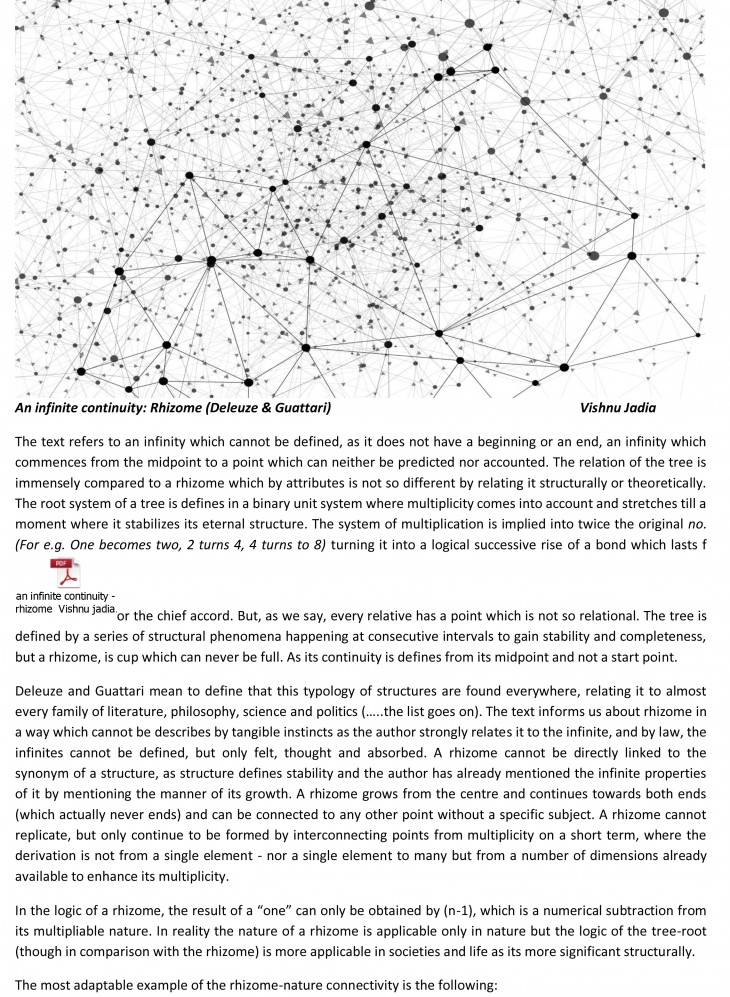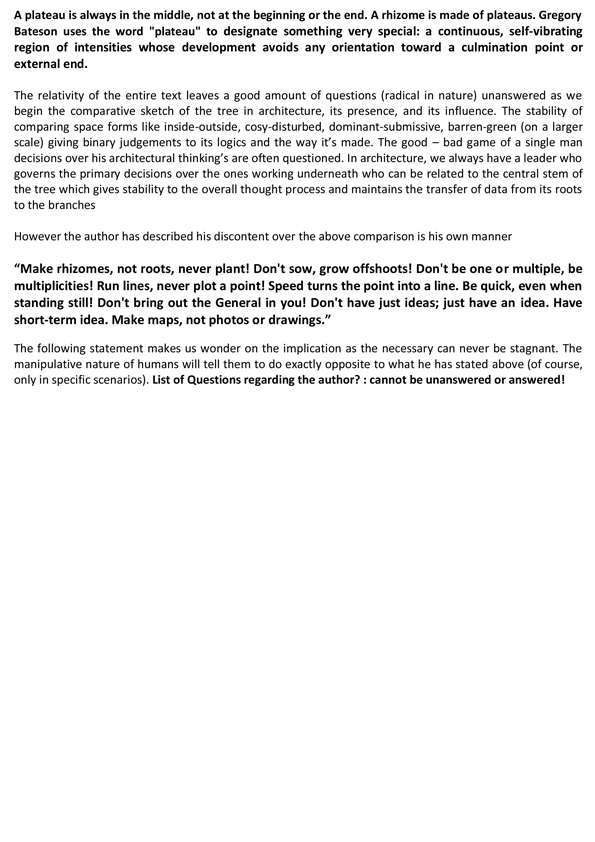The text informs us about rhizome in a way which cannot be describes by tangible instincts as the author strongly relates it to the infinite, and by law, the infinites cannot be defined, but only felt, thought and absorbed. A rhizome cannot be directly linked to the synonym of a structure, as structure defines stability and the author has already mentioned the infinite properties of it by mentioning the manner of its growth. A rhizome grows from the center and continues towards both ends (which actually never ends) and can be connected to any other point without a specific subject. A rhizome cannot replicate, but only continue to be formed by interconnecting points from multiplicity on a short term, where the derivation is not from a single element – nor a single element to many but from a number of dimensions already available to enhance its multiplicity.
A rhizome works with planar and trans-species connections, while an arborescent model works with vertical and linear connections. Their use of the “orchid and the wasp” is taken from the biological concept of mutual ism, in which two different species interact together to form a multiplicity (i.e. a unity that is multiple in itself). horizontal gene transfer would also be good illustrations.
“As a model for culture, the rhizome resists the organizational structure of the root-tree system which charts causality along chronological lines and looks for the original source of ‘things’ and looks towards the pinnacle or conclusion of those ‘things.’ A rhizome, on the other hand, is characterized by ‘ceaselessly established connections between semiotic chains, organizations of power, and circumstances relative to the arts, sciences, and social struggles.’ Rather than narrativize history and culture, the rhizome presents history and culture as a map or wide array of attractions and influences with no specific origin or genesis, for a ‘rhizome has no beginning or end; it is always in the middle, between things, interbeing, intermezzo.’ The planar movement of the rhizome resists chronology and organization, instead favoring a nomadic system of growth and propagation.

